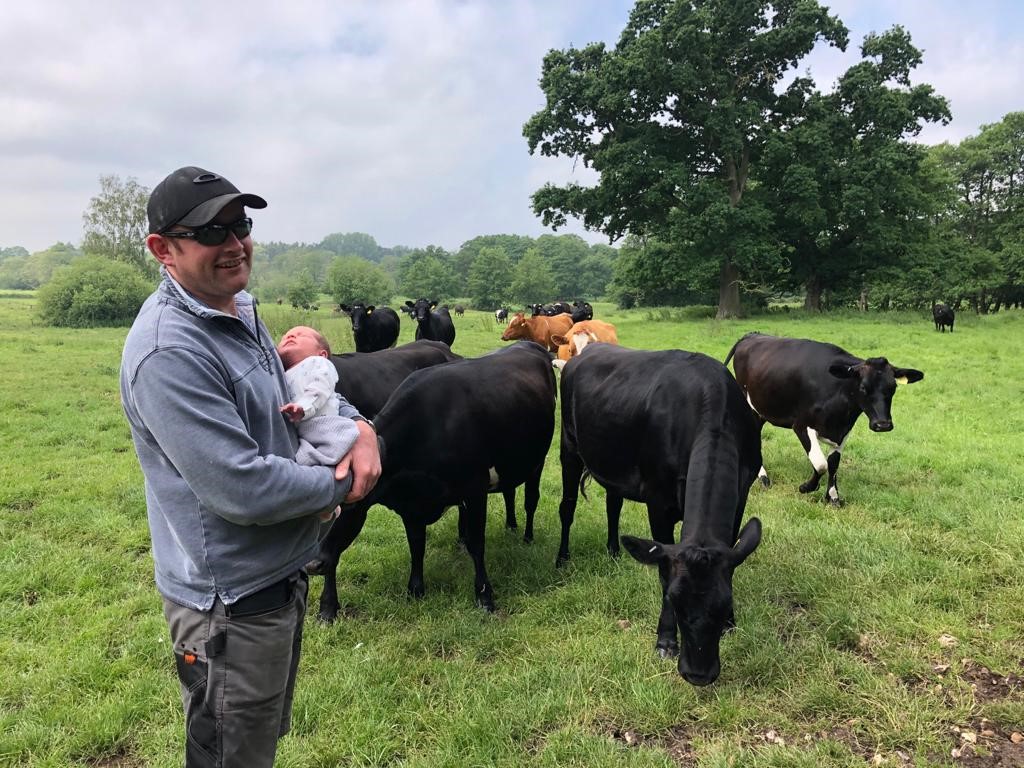- Home
- Knowledge library
- Meet Forage for Knowledge contributor Ben Walker
Meet Forage for Knowledge contributor Ben Walker
Ben Walker started measuring and testing grass seven years ago for Forage for Knowledge – time that has been spent building faith in grazed grass, which is saving £400/cow/year in concentrates.
The business
A family dairy and arable farm at Attleborough, Norfolk, run in partnership with Ben, his parents, Ian and Sue, and brother, Tim. The herd changed from all-year-calving Holsteins, yielding over 10,000 litres, to an autumn block of crossbreds and paddock grazing.
The farm
Altitude: 41 m
Soils: Ranging from sandy loam to clay loam
Rain: 662 mm
53 ha milking platform + 12 ha new leys in 2021; turnout usually from mid-February (earliest was 8 Feb ) until 1 November
21 ha silage leys
30 ha maize
Home-grown wheat is caustic-treated for the winter TMR; rolls are fed in the field in summer.
The cows
180 cows (75%) Jersey x Friesian
12-week autumn block starting 1 September; loose-housed in winter
7,600 litre average from 1,792 kg concentrates
628 kg MS/head
4,262 litres from forage
Youngstock:
R1s Norwegian Red cross
R2’s Jersey cross in-calf to Norwegian Red
What have you learnt from seven years of measuring and testing grass?
“To have faith in grass!” says Ben. “Every year, grass samples show consistently good feed value from overwintered swards, through to the autumn. The other major thing I have found with religious measuring is the ability to adapt things and be flexible. It gives me the bigger picture: buffering cows to make up shortfalls in droughty summers, housing cows again due to snow, or upping numbers at grass quicker than planned to increase demand to match supply.”
Every year, Ben sees a trend in grass production relating to soil type and moisture: his heavier/wetter fields always do best in the end. “Lighter fields are great for early turnout but suffer dreadfully through summer,” he adds.
But how does he make time for a weekly grass walk? “It’s every Monday morning for 1.5 hours and it’s the most important time of my week, so if something is happening on Monday, then I measure on Sunday to plan for the week ahead. It doesn’t get left.”
Readings are uploaded to Agrinet on his phone as Ben walks the platform, working out what feed needs to change as he returns to the yard, where he prints the results. Fortnightly grass testing has also given him confidence that he is feeding 12 ME grass all year: “We used to grow 11 ME and we have increased quality and consistency, so for the past two years, fresh calvers have grazed, whereas before they were housed onto a winter diet.”
Best year/worst year for grass?
Despite being in the dry east, Ben’s average grass yield is 9.51 t DM/ha. His worst year in 2020 grew 7.96 t DM/ha due to two droughts following a dry winter; his best yield was in 2017 when he grew 11.08 t DM/ha because it kept on raining: “Growth rates kept going and we didn’t get the usual tail-off,” he adds.
A switch from blanket fertiliser applications to weekly spreading on paddocks that have been grazed in the previous seven days has targeted nutrients more efficiently, which in turn has improved growth rates.
Grazing goals for this year?
Integrating 12 ha of new leys to the platform and cutting concentrates to 1,500 kg/cow. “We fed 100 kg/cow less this winter and it’s having the confidence to cut it further. With a bigger platform, we can extend the round and graze more decent grass without feeding concentrates,” says Ben.
Where is your five-year plan taking you?
This year: reducing the block to 10 weeks and generating 10 ppl profit. Longer term: expanding to 300 autumn block-calving cows on self-feed silage.


